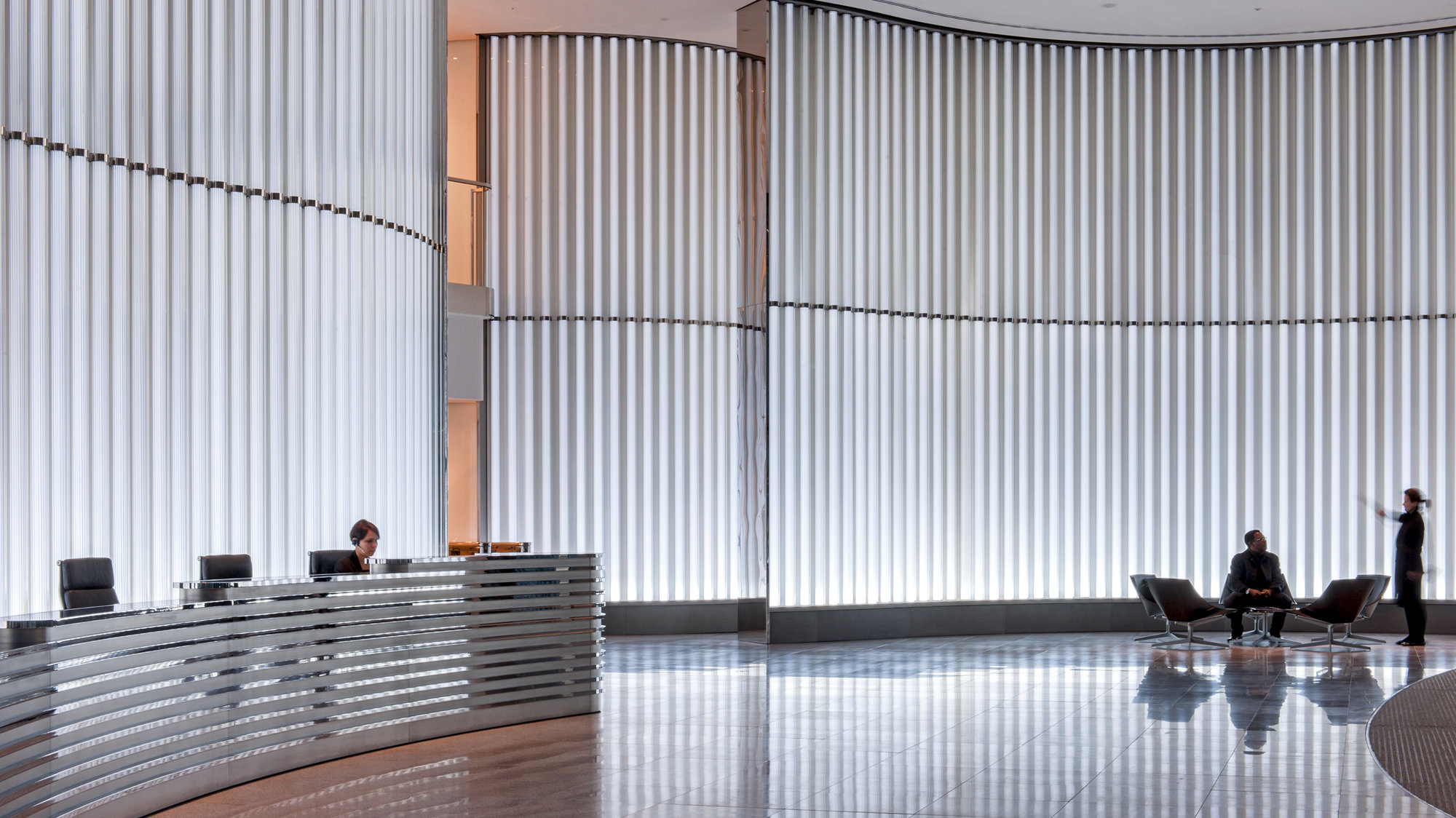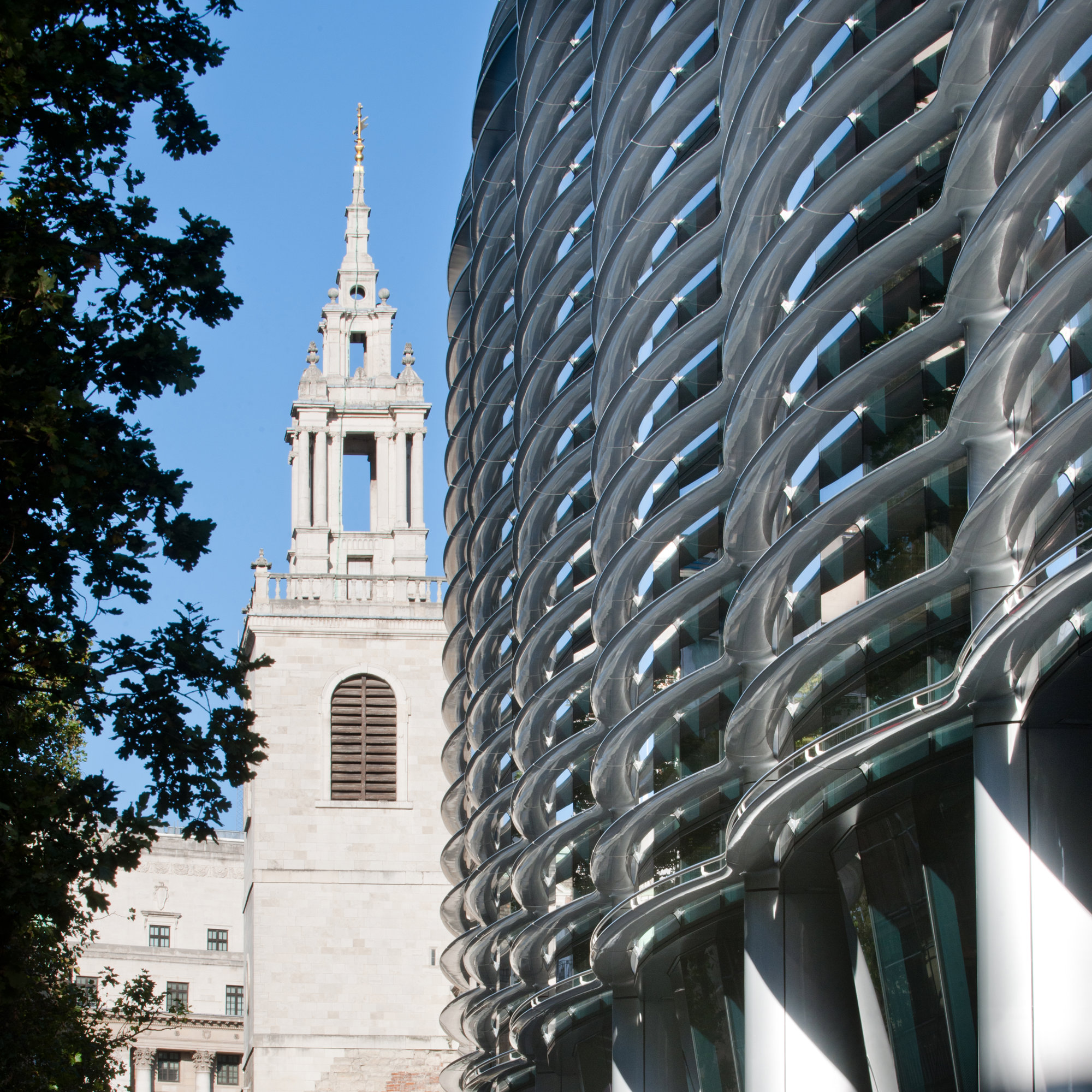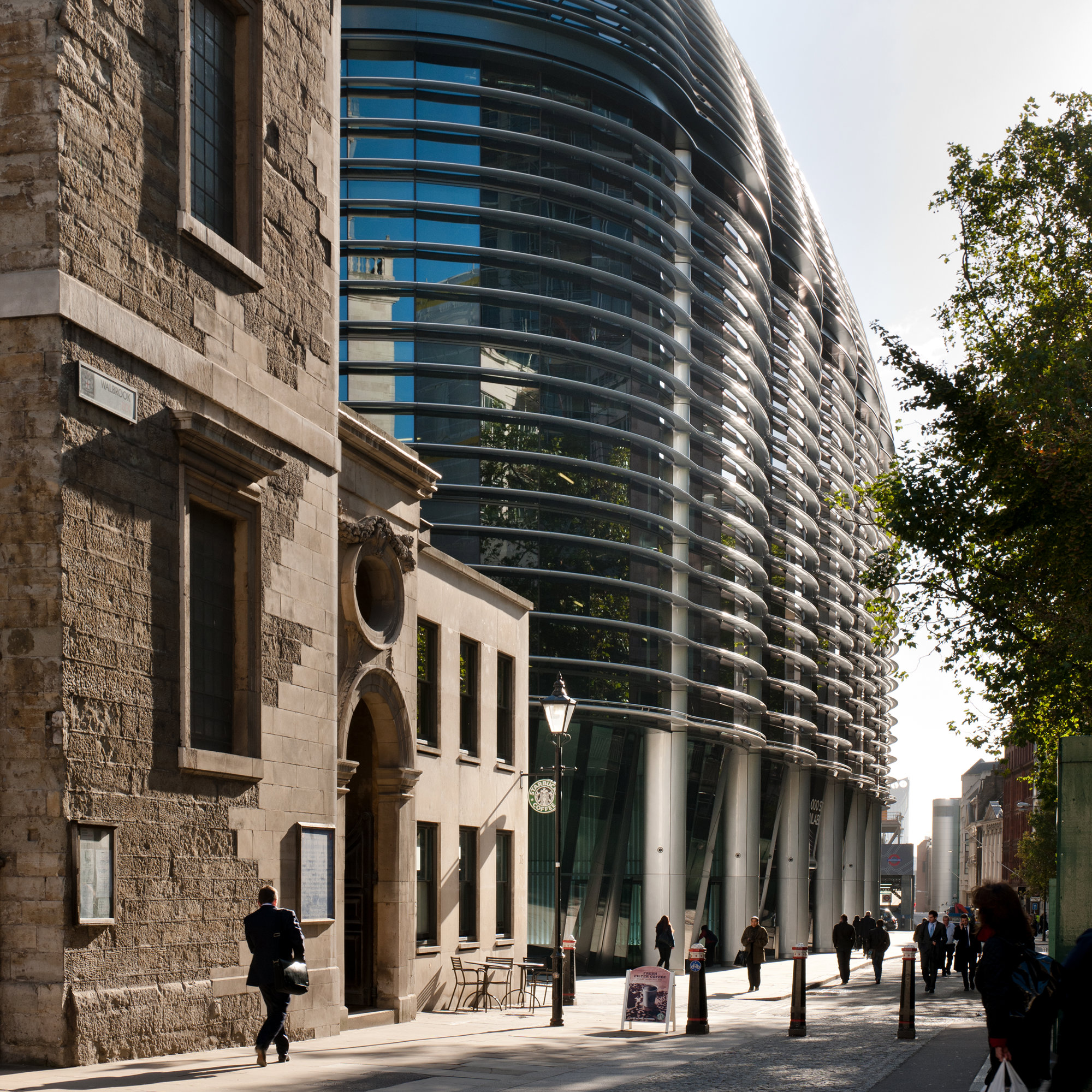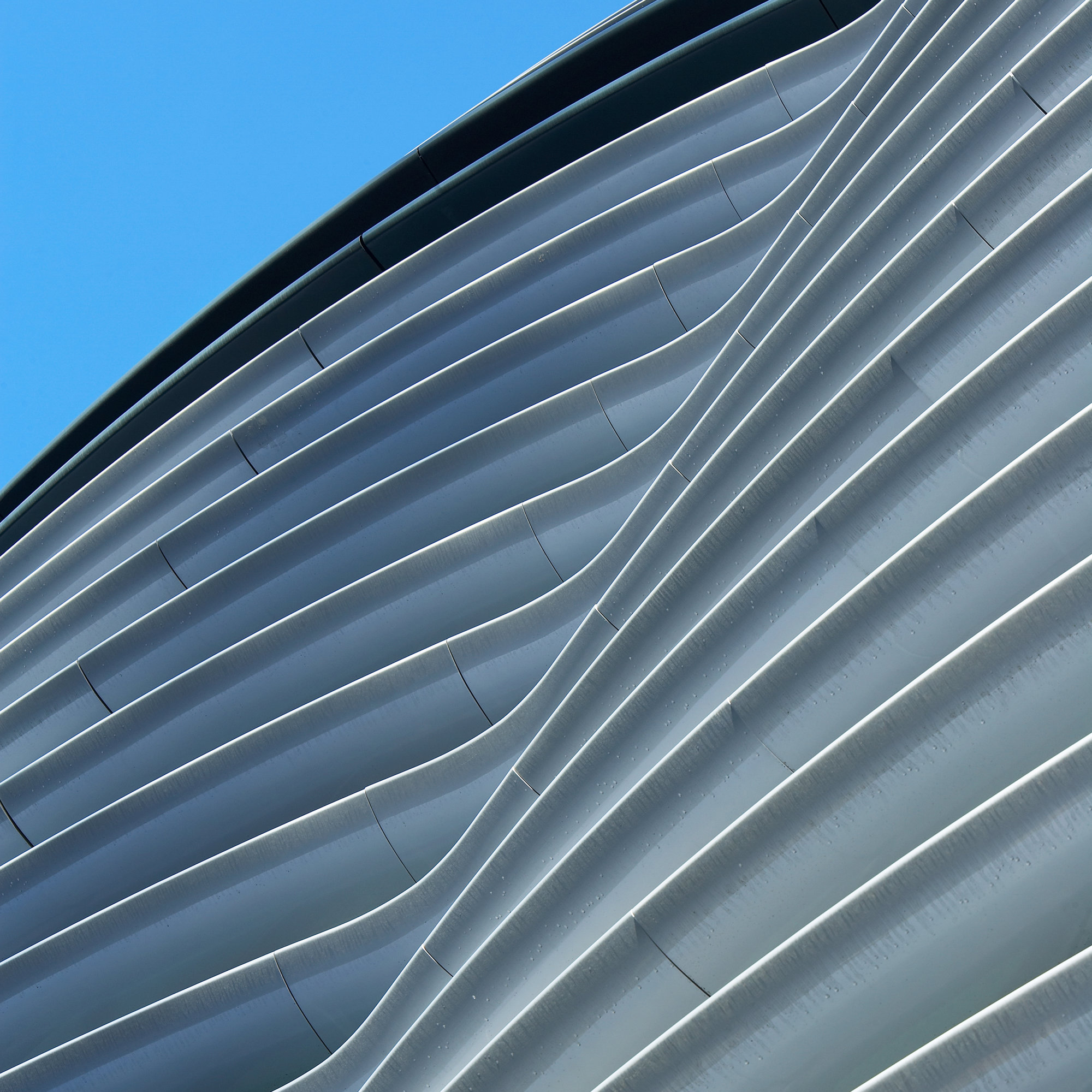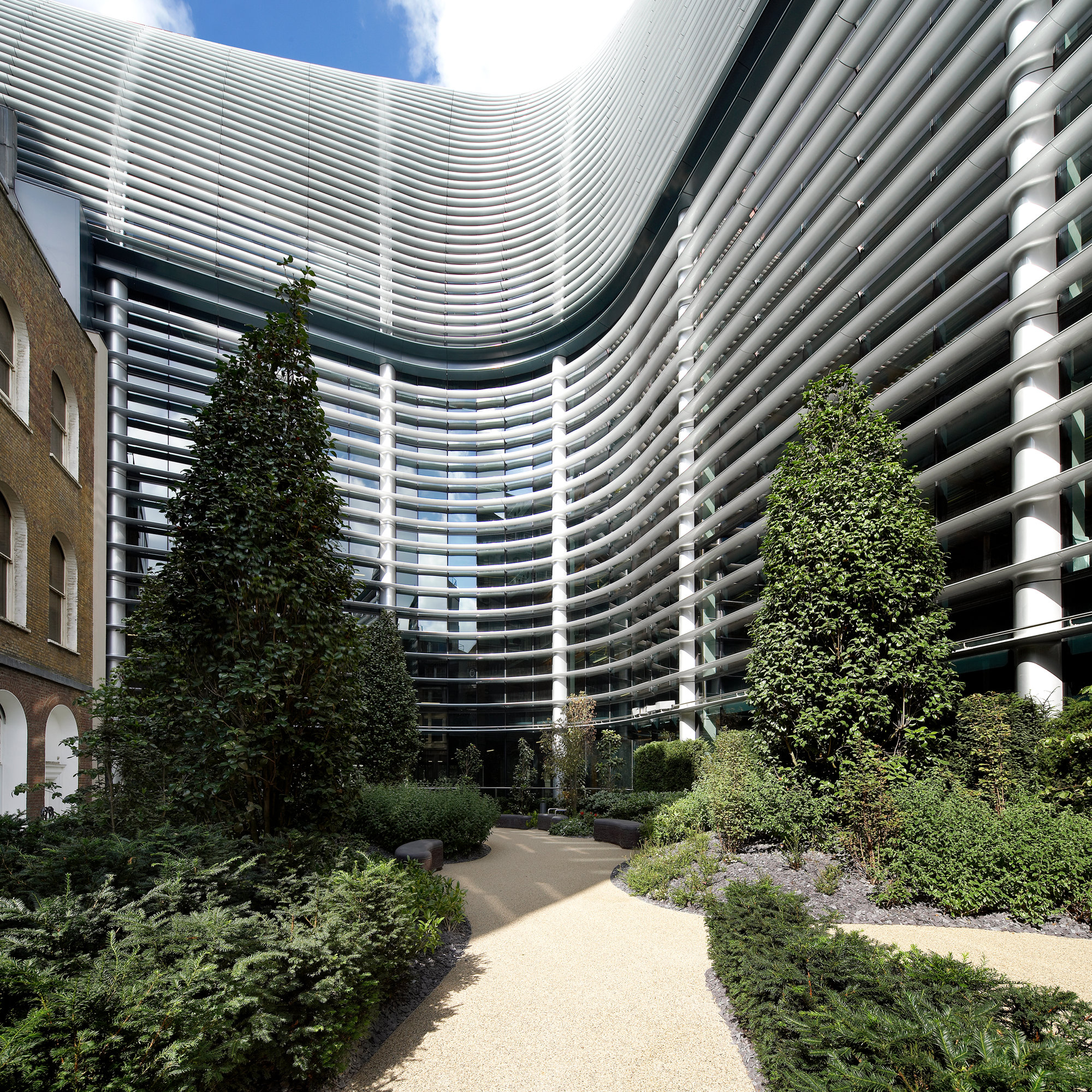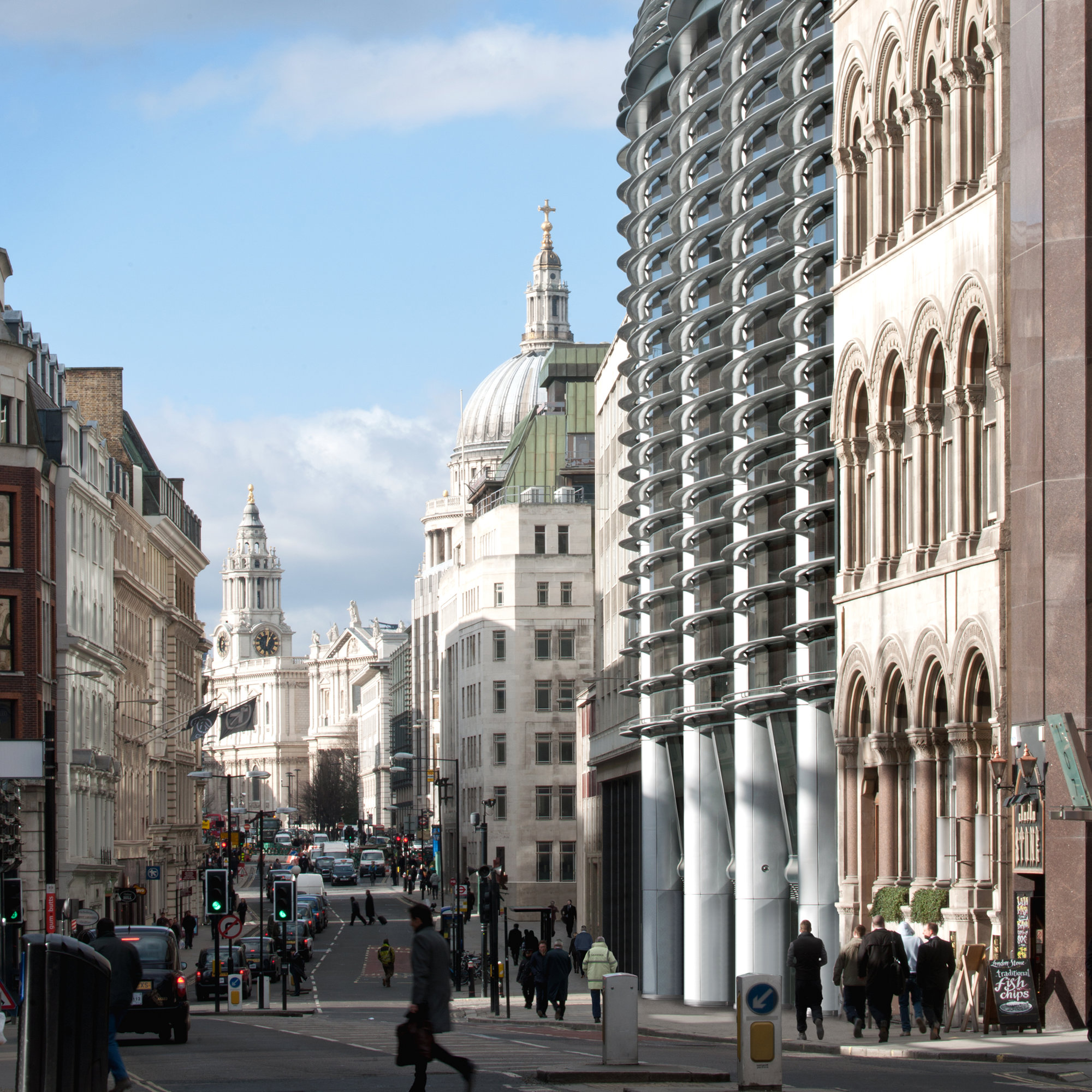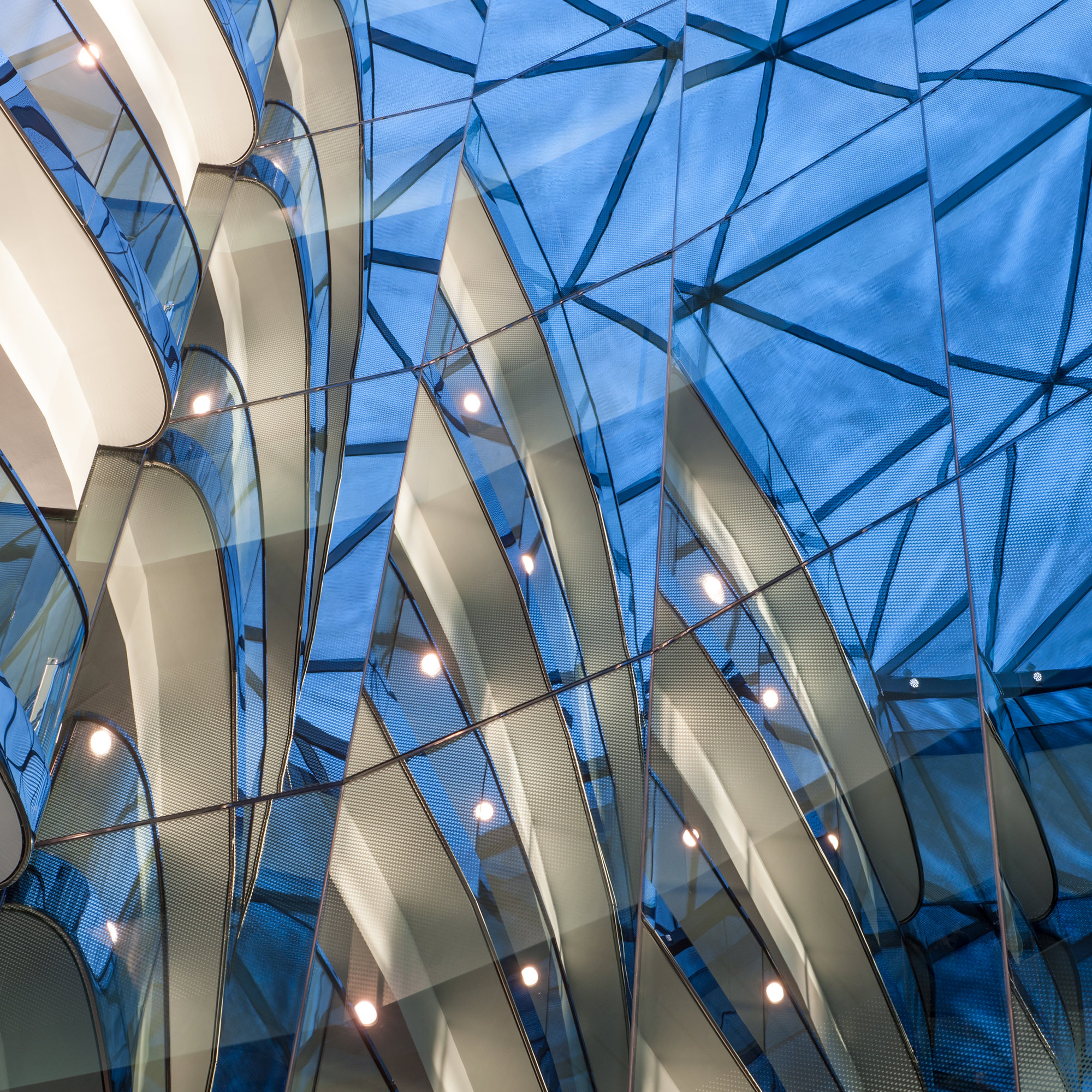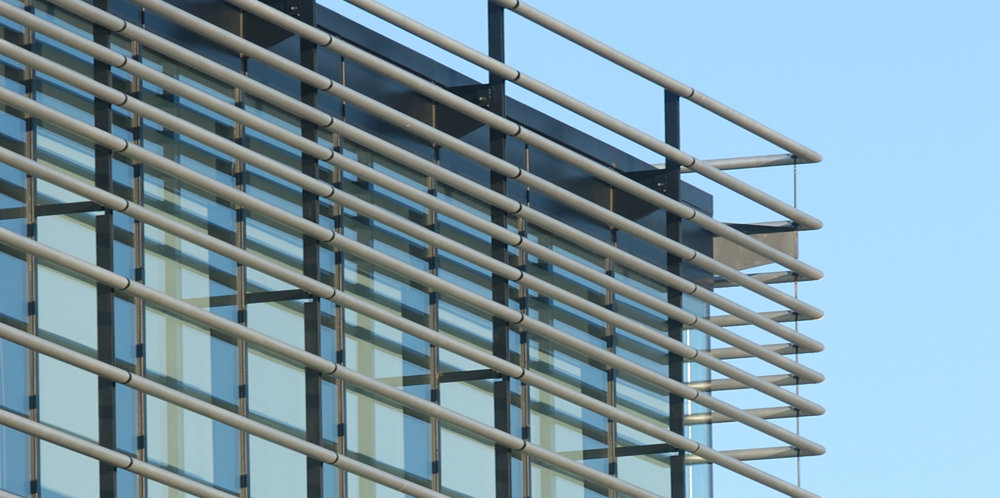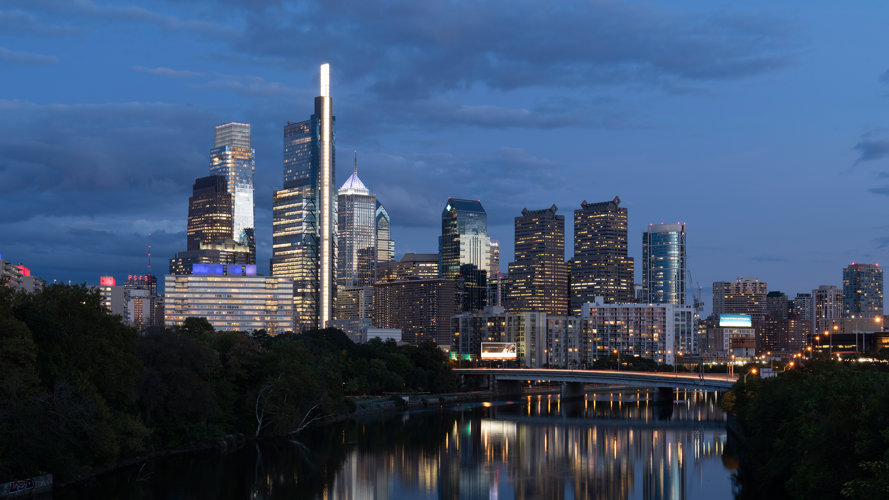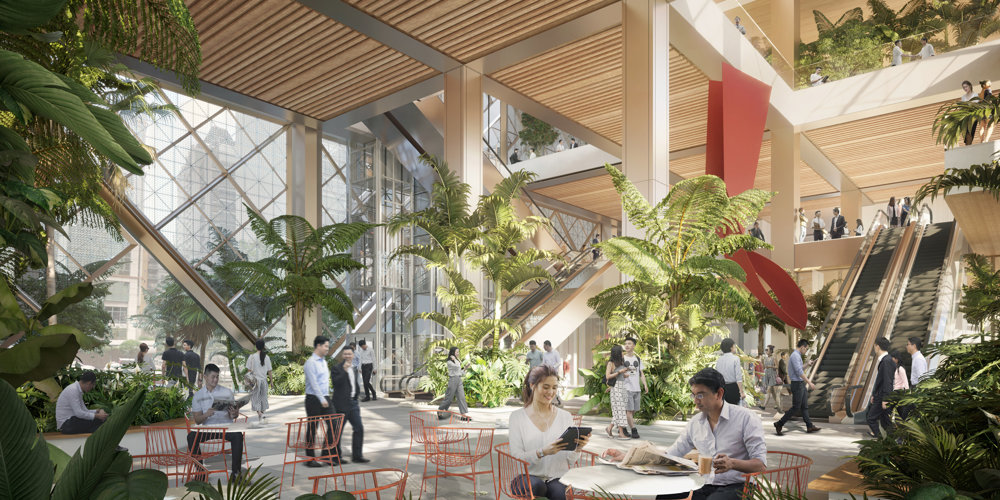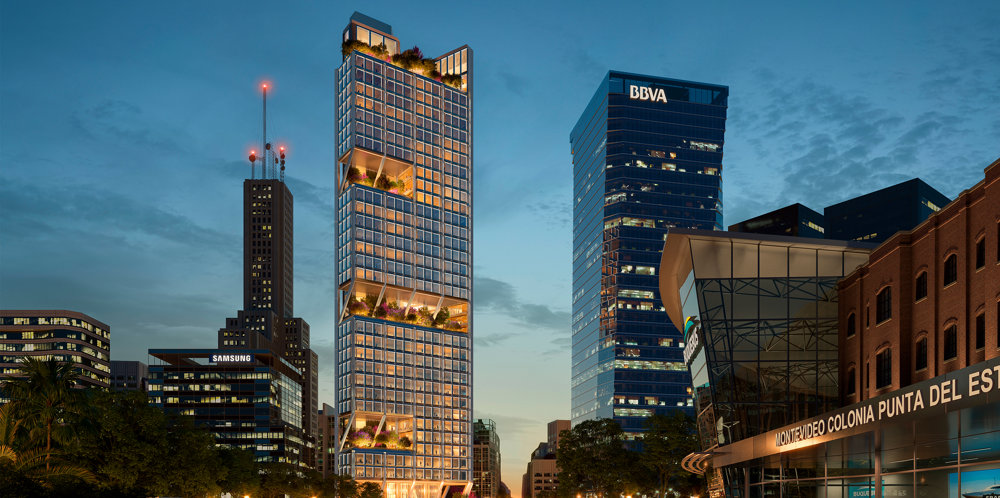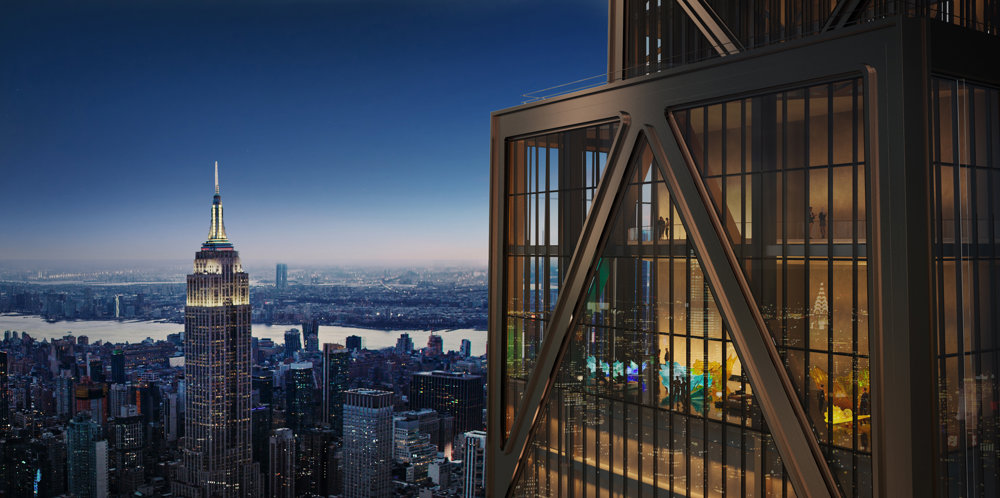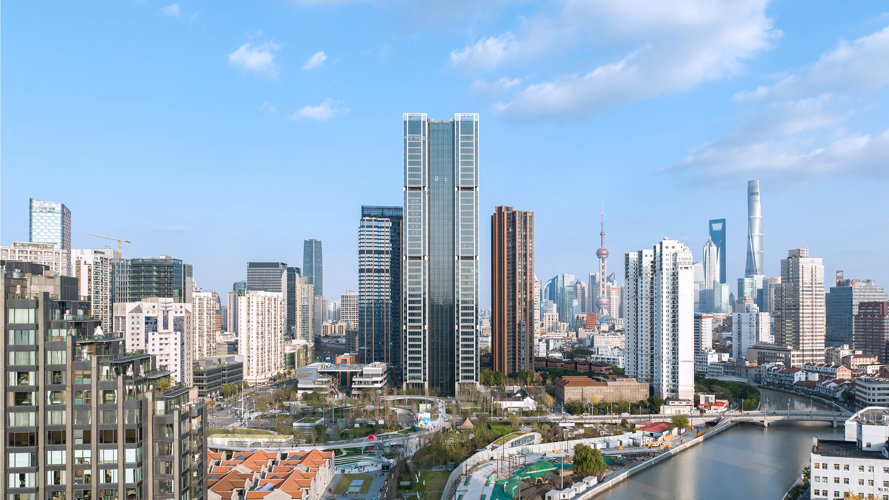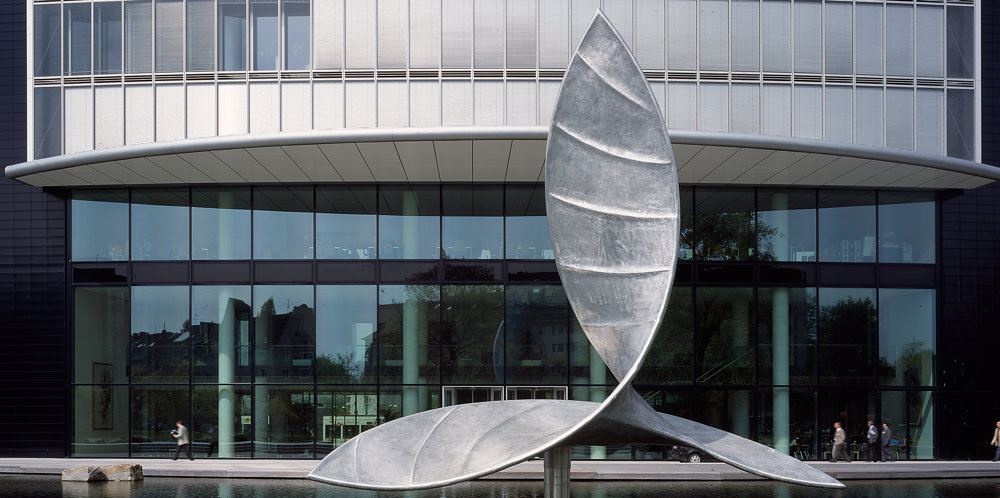The challenge in designing any new commercial structure in the City of London is to create a building that can both acknowledge its historical context and stand discreetly on its own terms. The Walbrook replaces an undistinguished group of 1950s offices within the City's conservation area. Next to Wren's Church of St Stephen Walbrook and close to St Paul's Cathedral, it occupies a particularly sensitive site within a number of protected view corridors.
Intended as the headquarters building for a major corporation, the building establishes a distinctive presence while respecting the scale of the neighbouring buildings. The line of the facade follows the curve of Walbrook, the processional route that runs alongside Mansion House, while a setback at the fifth floor aligns with the cornice of St Stephen Walbrook. The facade is articulated as a series of bays, which refer to the domestic scale of the buildings that originally stood here and have the effect of extending the site boundary to optimise the plan area. While the scheme's massing is determined by the historical fabric of the city, the horizontal bands of reflective brise soleil are a contemporary statement in an area where planning guidance has traditionally favoured the use of stone. Made of a glass-fibre-reinforced polymer - a material more commonly used in the bodywork of cars - the louvres wrap the entire building, unifying the main volume with the receding upper levels, so that from the street the facade appears as a continuous arc.
At ground level the facade is drawn back behind a colonnade, which is lined with shops and cafés. To the rear, the building curves around a church garden that has been extended and paved with Welsh slate in reference to its statue of the Welsh revolutionary, Owain Glyndwr. A new flight of stairs reinstates a historical public route through the site to St Swithin's Lane and is lined with stone figures, reclaimed from the facades of the buildings that previously occupied the site.









